If I did a 2018 sewing round up, or set myself sewing goals for 2019, I don’t remember it, and can’t find it. So 2019 was a blank slate: I got done what I got done. And that’s kind of nice.
I’ve been trying to be less demanding of myself. I wish I could do all the things, all the time, and I tend to beat myself up mentally when I can’t. So for the last few years I’ve been trying to just be happy with what I do, and I think I’m getting there!
And I did do pretty well! Three Scroop patterns out, including the incredible hydra of a pattern that is the Augusta Stays (seriously, the amount of stuff we included in that pattern…it’s really four patterns, and was certainly the work of four standard patterns). A bunch of wardrobe sewing for me, a bunch of sewing for my mum (I packed more clothes for her than for myself in my recent trip home!).
And actually quite a lot of historical sewing as well, which, with a bit of “OK, I finished that challenge really late” means I completed my seventh full Historical Sew Monthly (actually, the first two were fortnightly, so that’s even more insane!).
So here’s my historical sewing roundup for 2019, as told through the Historical Sew Monthly challenges:
January: Dressed to the Nines:
“Make something fancy so you’ll be ‘dressed to the nines’ — whether its the full outfit, or a little accessory. Or look at the challenge in a different way, and make something from a year ending in 9 (find a portrait or fashion plate or mention to support the date), or even an item with 9 major design elements (9 buttons down the front, 9 tucks in a petticoat etc)”
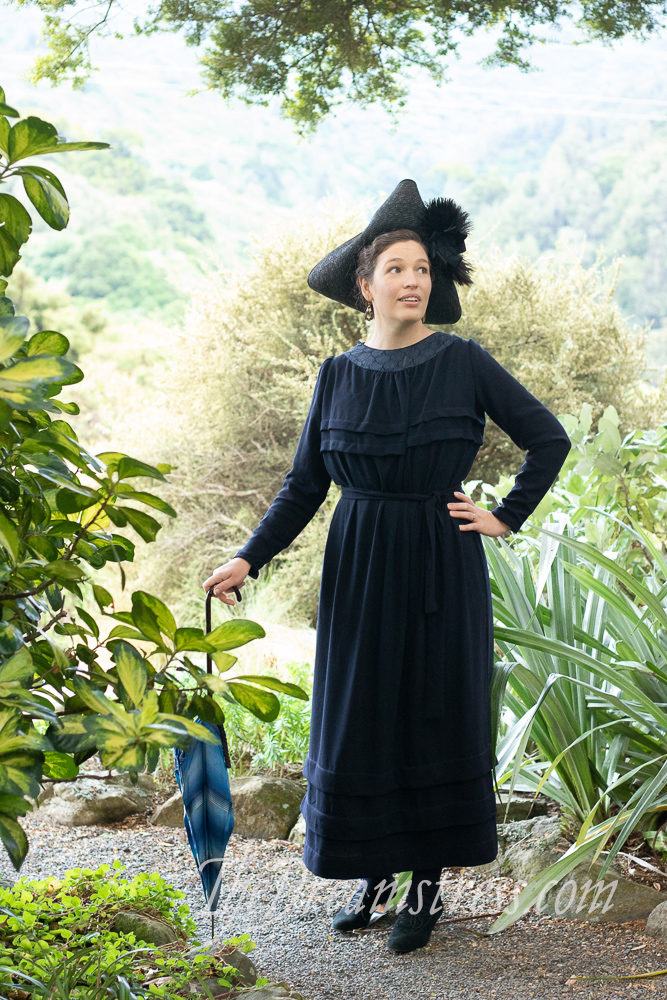
I finished my 1919 ‘Not Another Blue Dress’ at the end of January, wore it for a photoshoot with Theresa in February, and gave it a bit of a spiff up for Costume College in August. And I love it and am so happy with it! It’s 1919 and I feel dressed to the nines in it, even if it’s just a day dress.
February: Linen/linens:
“Make something out of linen, or that falls under the older definition of linens: ie: underclothes (lingerie literally means linen)”
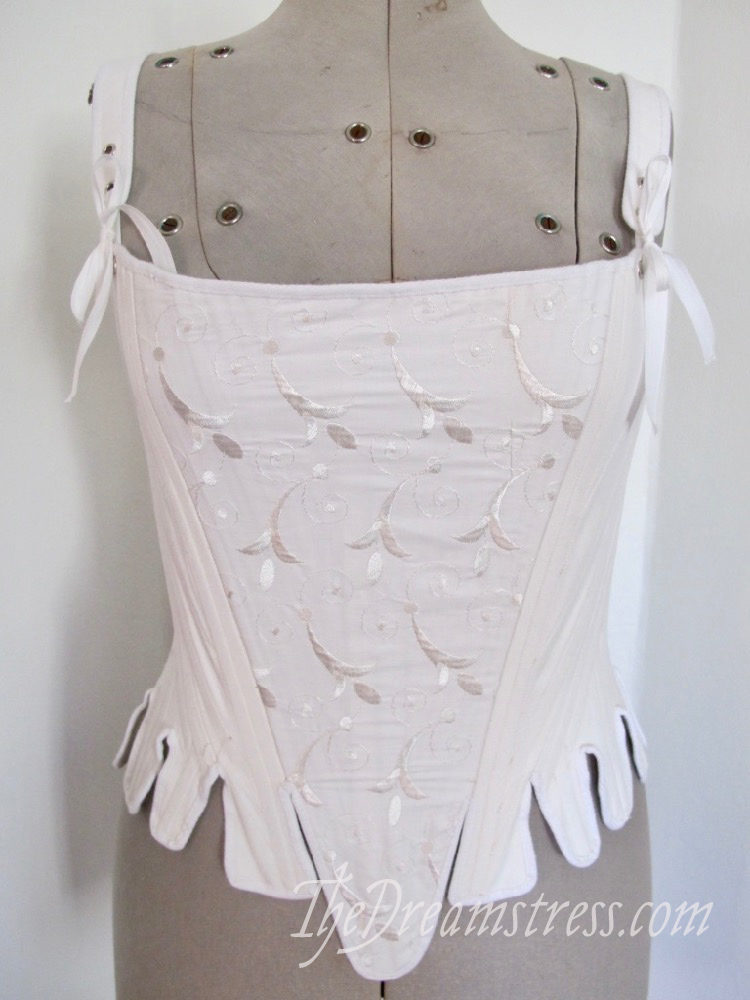
I stretched the definition of the challenge just ]a little bit, and made 1760s stays – they are an undergarment, but weren’t always technically considered linens. I also used theatrical instead of historical construction techniques, so it was a very soft entry. But they do give me a lovely silhouette!
March: Sewing Kit:
“Create an item that makes use of your favourite sewing tool, instrument, or gadget; or an item made for your historical sewing kit (huswif, pinball)”
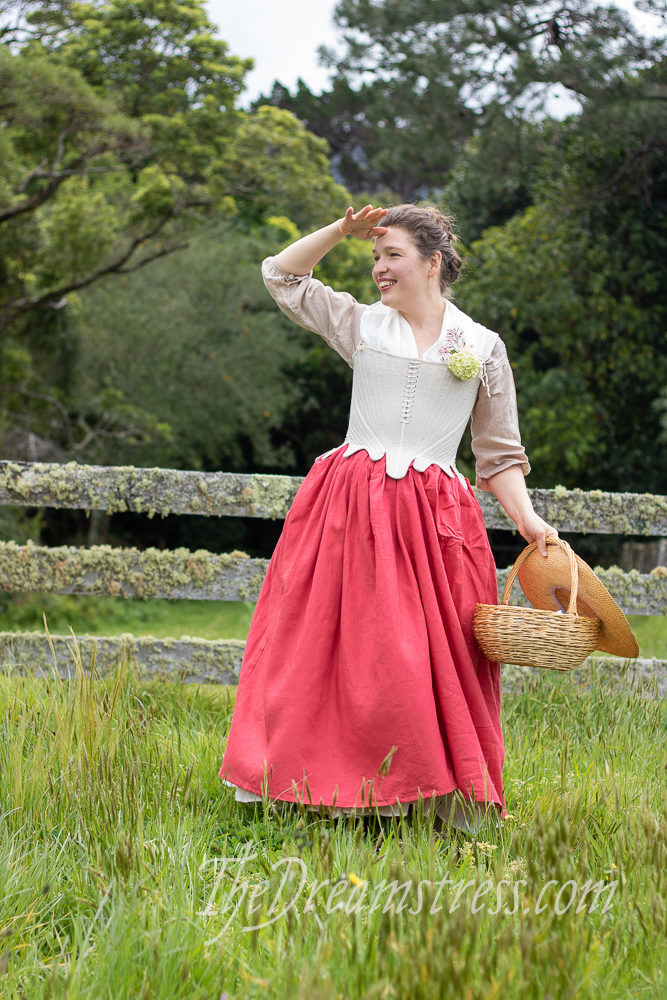
I’m going to count my historical Augusta Stays for this, because they used almost every tool in my sewing kit, literally and mentally! Thimbles, awls, brushes for buckram, sewing wax, needles, different types of thread, bone snips, sandpaper. Plus patternmaking, grading, digital everything…
I didn’t finish them in March, but I certainly worked on them solidly for the whole month!
April: Upping your game:
“Make something that really stretches you and that works on the bits that you tend to rush through or skimp on.”
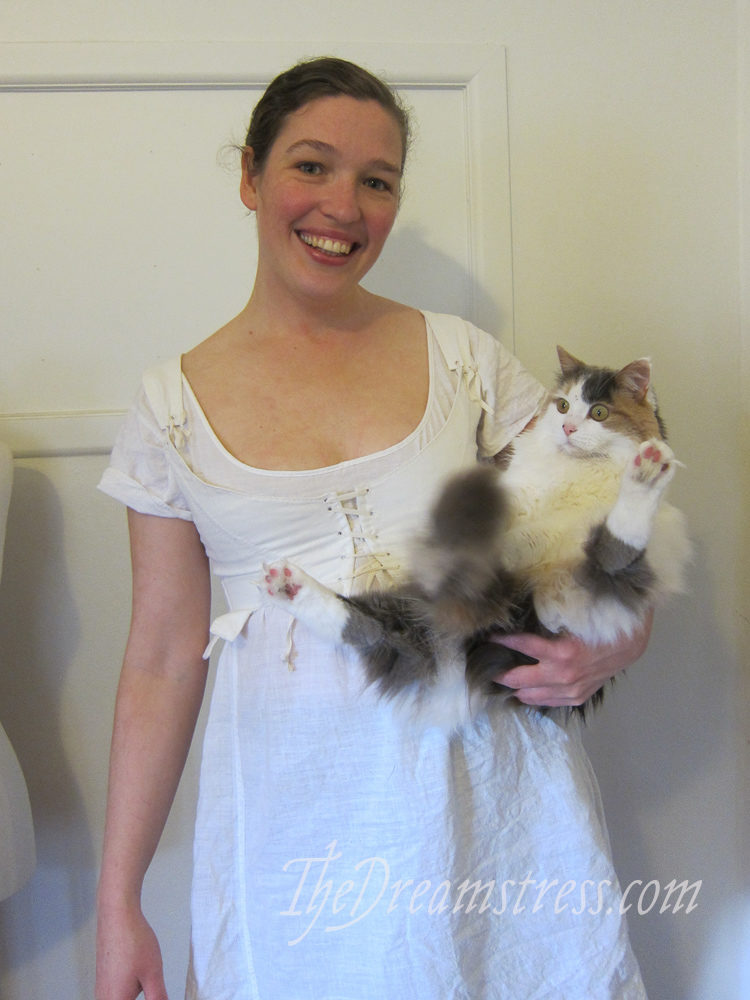
My 1790s jumps lift me up and definitely lift my late 18th century costuming game!
May: Florals:
“Create an item that features flowers in some way.”

Not historically perfect, but these pockets feature bugs, birds, bees, and another nod to nature in their very green fabric re-use.
June: Favourite Technique:
“Make an item using your favourite sewing or embellishment technique.”
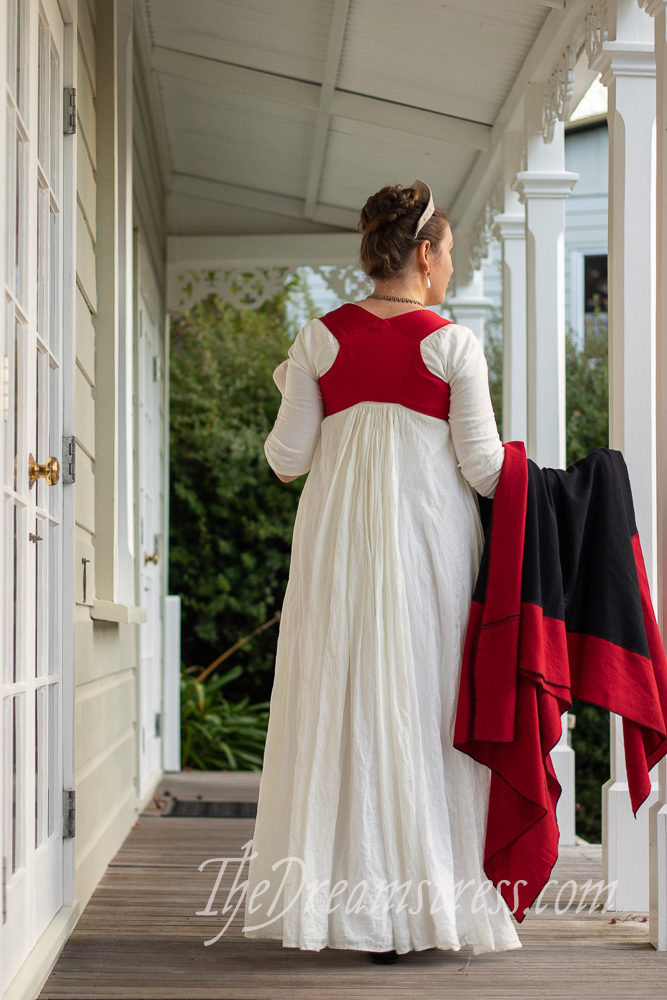
My 1790s sleeveless spencer features not just one, but four, of my favourite techniques! Follow the link to find out what they are.
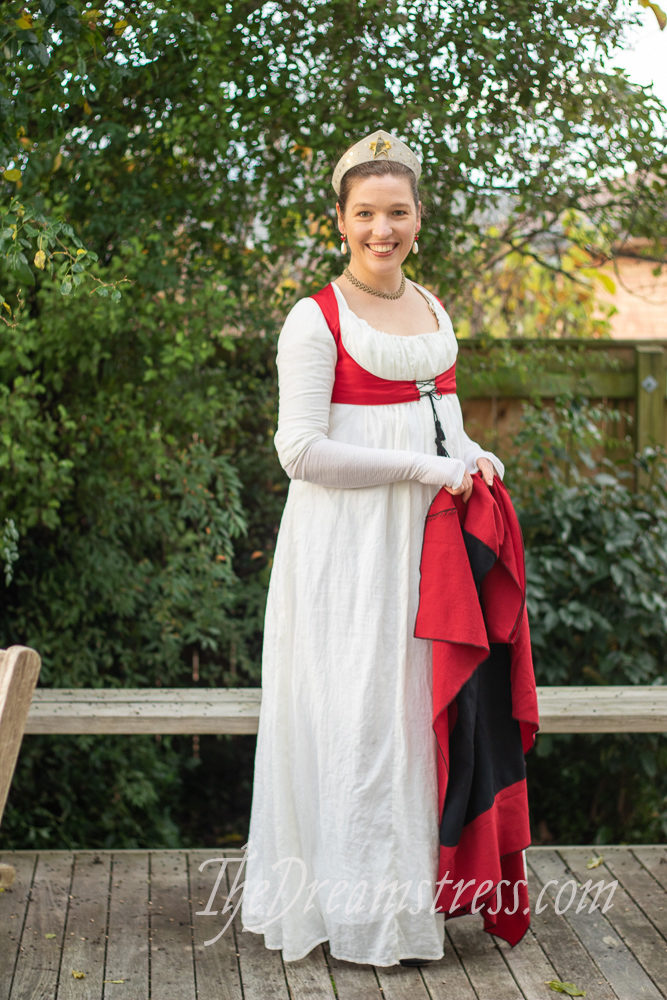
July: Unexpected:
“Make an item with an unexpected feature. Will it be a snazzy lining, a hidden pocket, or something else? Surprise us!”
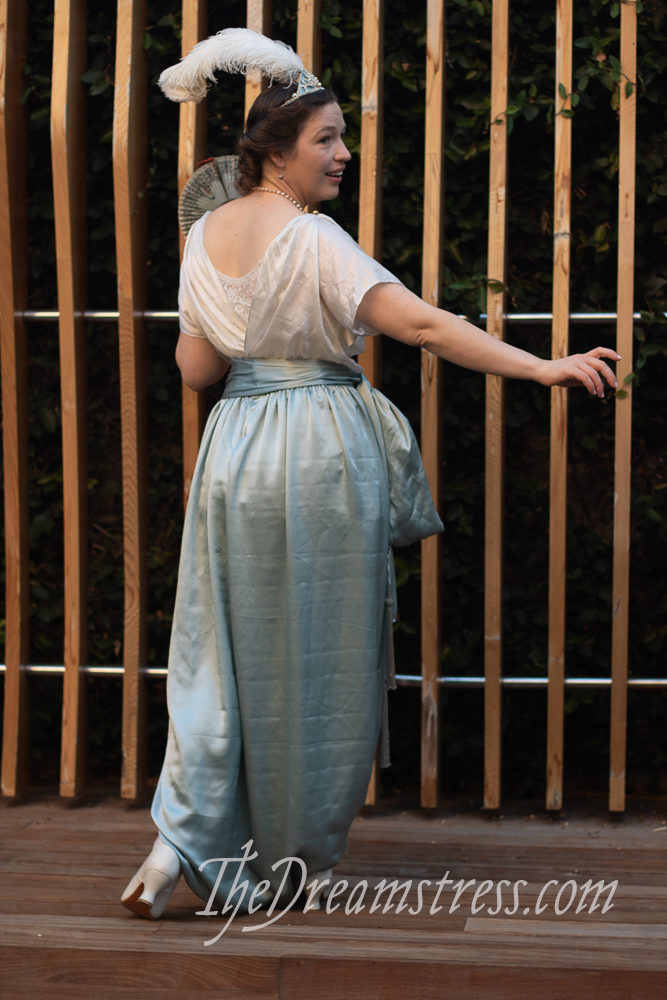
Lounging pyjamas were certainly unexpected in 1913. And the construction is quite unexpected – they are basically very elegant diapers!
August: Out of a Portrait:
“Lift a garment out of a portrait, and make it up to include in your wardrobe.”
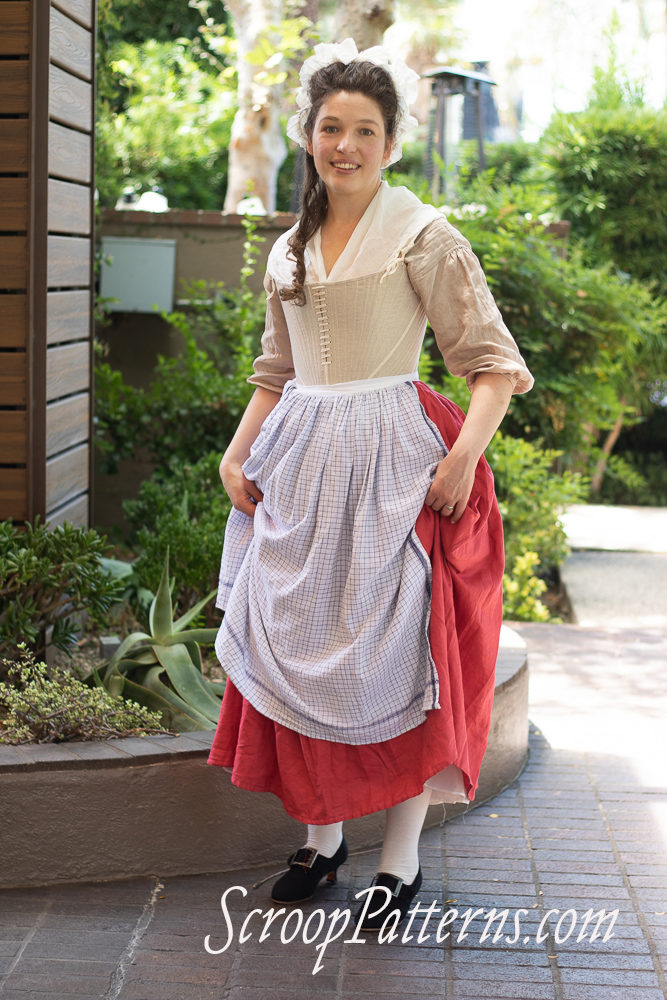
I (with help from awesome friends) made a linen petticoat and apron to wear with my Augusta Stays at Costume College so that Amber, Cait & I could be the fruit sellers from Wheatley’s ‘Cries of London’

September: Everyday:
“It’s not all special occasion frocks. Make something that would have been worn or used for everyday.”
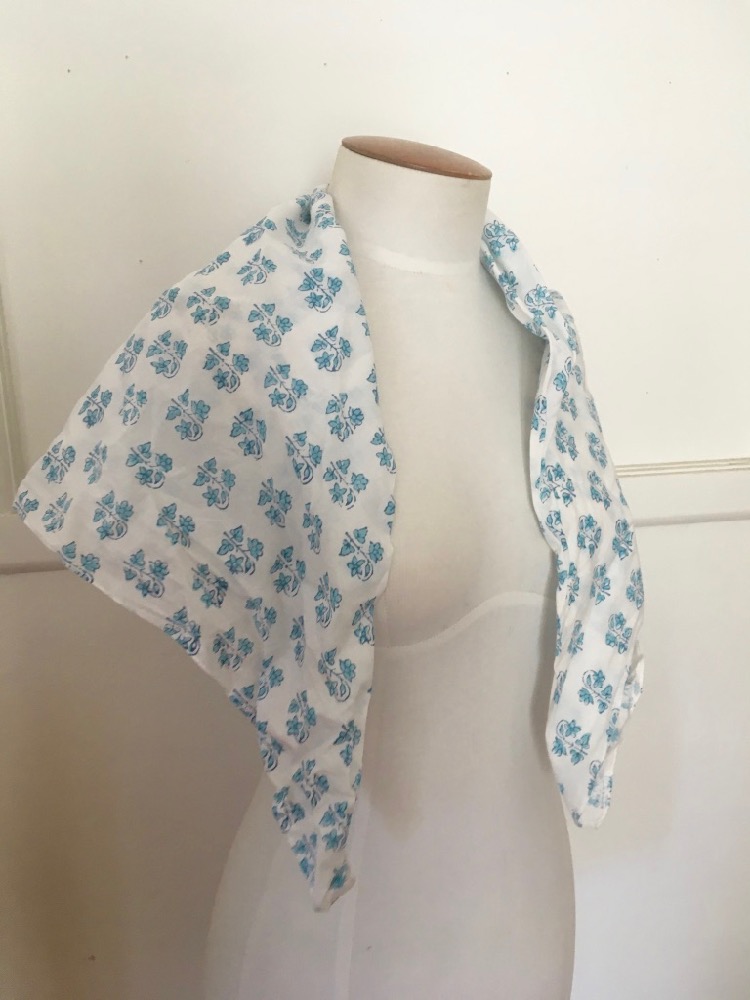
This kerchief is so simple I haven’t blogged it, but it’s a fun item, which makes me very happy, and instantly turns an everyday outfit from the late 18thc or early 19thc from boring to fun.
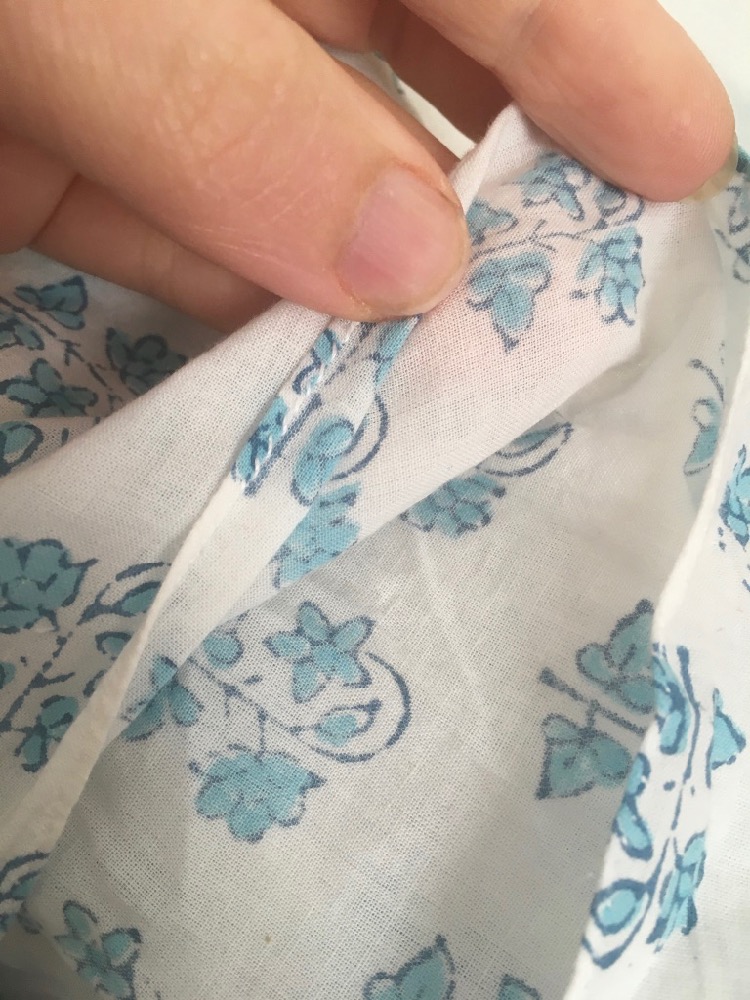
October: Details:
“Sometimes the little things really make something fabulous. Focus on the details of your garment, to create something that just gets better the closer you look.”
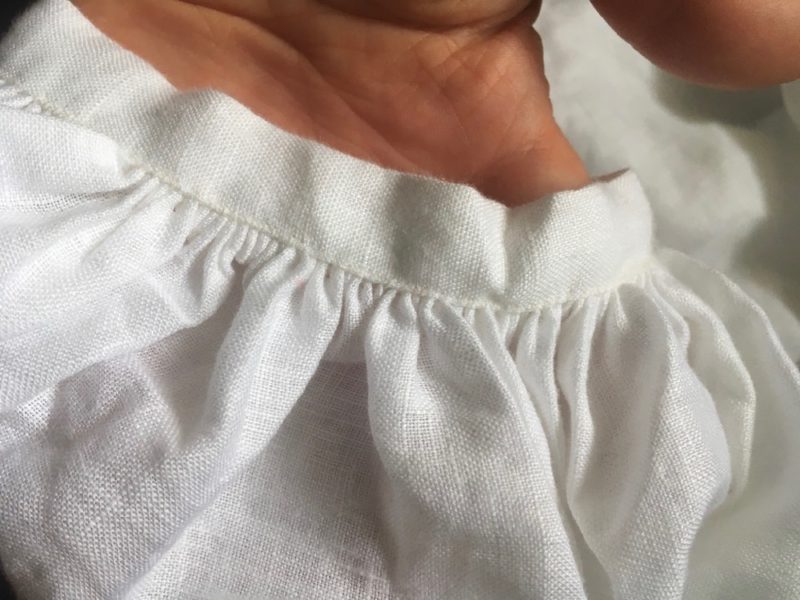

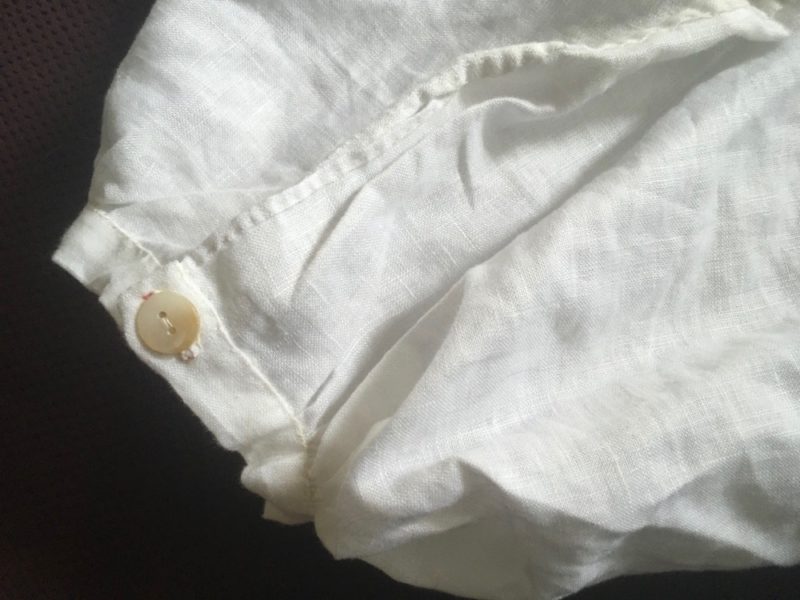
Another thing I haven’t managed to blog yet, but I (finally) finished an early 18th c shift I started back in 2017. It’s a simple thing, but all the details elevate it: whipped gathers, hand worked buttonholes, flat felled seams. A very useful addition to my historical wardrobe.
November: Above the Belt:
“No hitting low! Let’s keep things on the up and up as the year closes, and make something worn above the belt.”
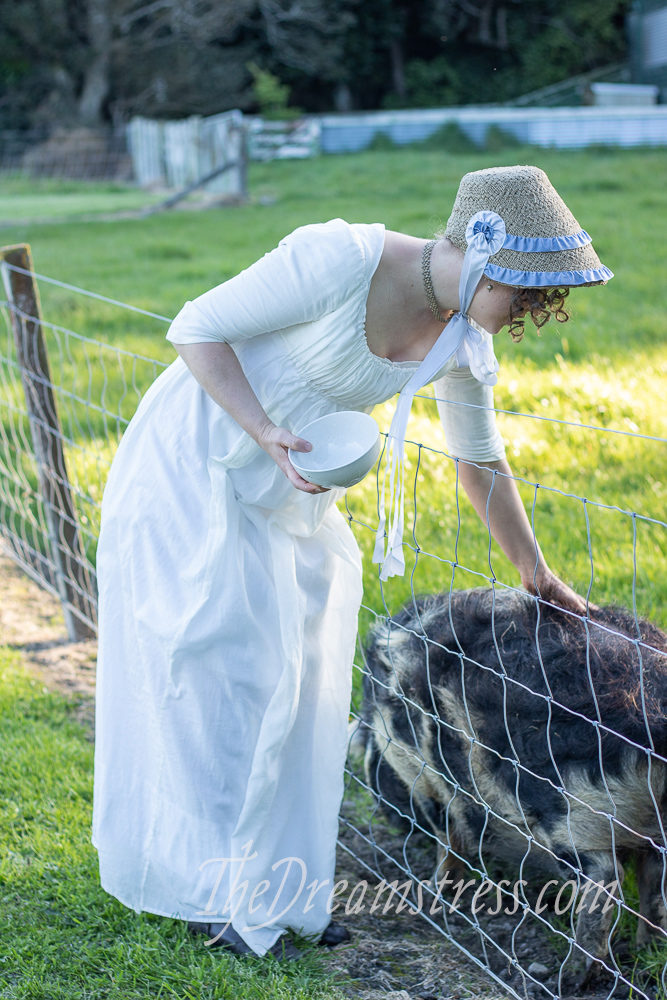
This one I will be blogging, because it’s certainly interesting enough, but it’s already made appearances in my posts about the plantain game, and feeding kunekune pigs.
But wait, there’s more!
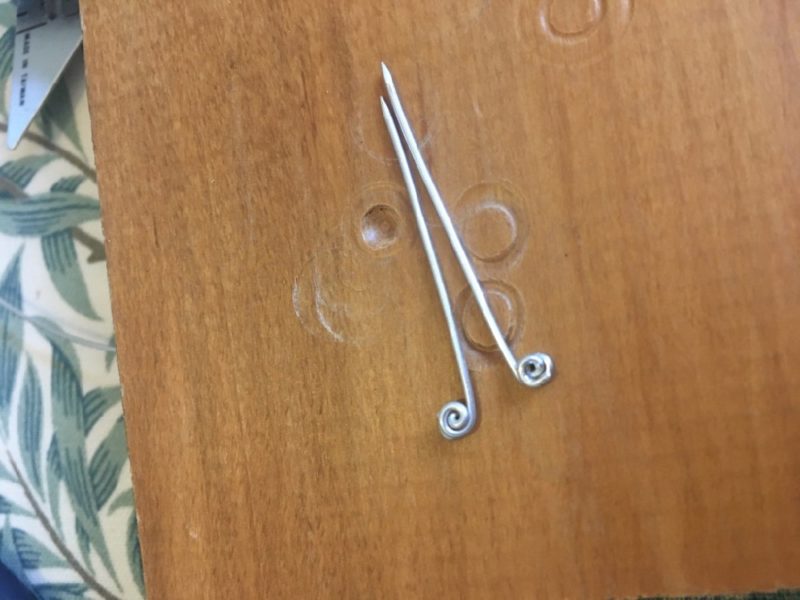
With guidance from Nina, I also made Medieval pins, perfect for holding my veil in place over my wimple.
December: On a Shoestring:
“It’s an expensive time of year, so make an item on a tight budget (say, under $15, or less than you’d spend on a reasonable priced takeaway meal for one person in your country — and no ‘stash’ doesn’t count as free: you still have to count what you would have originally paid for those items).”
I made a wimple. It’s just a rectangle of hemmed linen, but it’s a nice addition to my 14thc wardrobe. And, at $11 for 1/2 a meter of linen that I got on sale for $22pm, it qualifies nicely for the challenge, even if something spectacular that I managed to
This one I haven’t even photographed, because as soon as I finished it I either put it somewhere ‘safe’ or lent it to a friend to copy!
And that’s all folks!
Except for these:
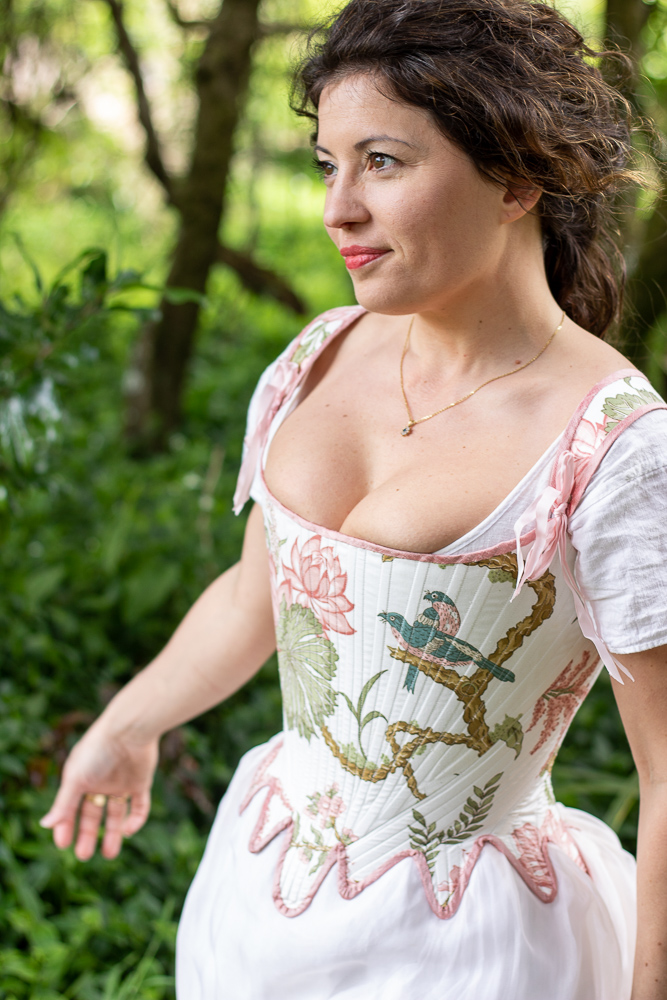
Theatrical Augusta Stays. Not quite historical, but they give a historical silhouette. And they’re so pretty….
And my Regency Captain Janeway diadem and ‘kashmiri’ shawl.
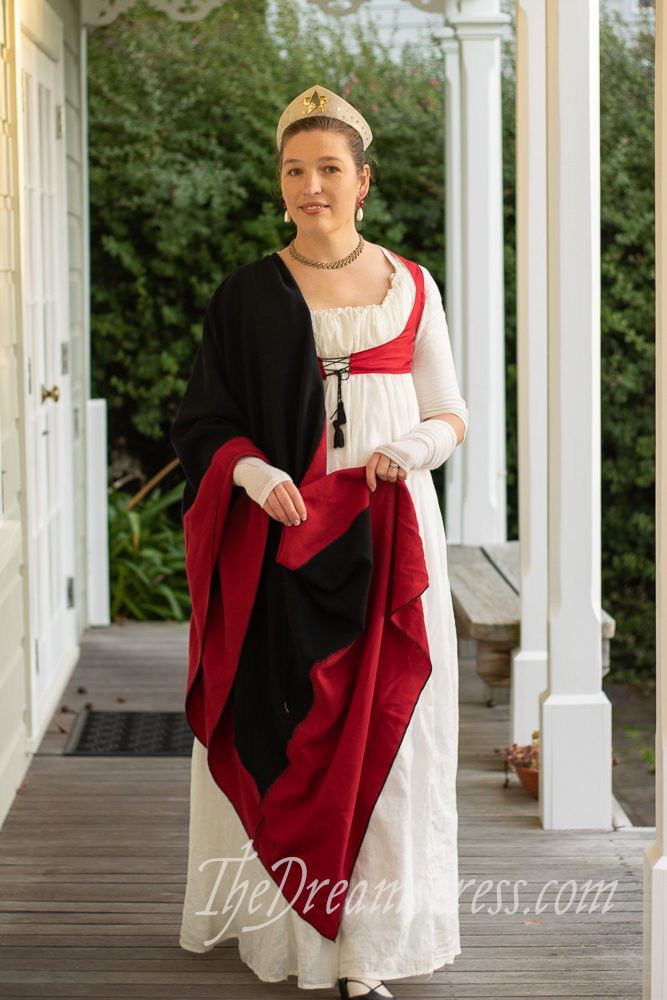

It’s a lovely set of items, big or small. Being ok with not getting things done quickly was one of my first lessons when I started sewing. At the start I got frustrated with myself if I didn’t do much because I was tired or busy, but allowing that ‘time off’ has been so important for my enjoyment of it. I also really like how, when looking back on a year, I’ve always secretly done more than I think. Including the little things is important!
I am such a sucker for year-end look backs (and this year’s decade look backs!)
You did so much! You did so much fun! And it sounds like you are placing an importance on your own joy and self-worth. That makes things way more fun.
Such perfection in every thing you make. I love these clothes, you look so pretty wearing all of them.
Wow, just wow
“I’ve been trying to be less demanding of myself. I wish I could do all the things, all the time, and I tend to beat myself up mentally when I can’t.”
Same here!
This year I have set myself very few “x task done by y date” goals (only with my writing work, actually). Instead I have more “focus on” goals (in house, garden, handwork etc).
So my sewing goals for 2020 involve moving a 15+-year-old WIP toward completion, and developing competency with sewing one specific undergarment pattern. Progress, not perfection.
All absolutely beautiful. And the shocked look on your cat’s face in the April picture just makes it
so many lovely things, with such workmanship! you must be very proud!
Thank you! <3